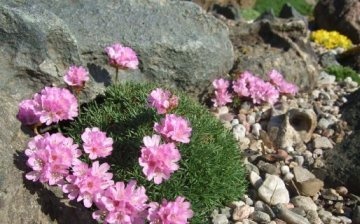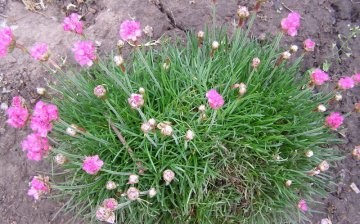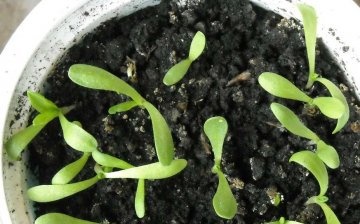We grow armeria from seeds and take proper care of it
Armeria is a very beautiful flowering ornamental plant. It belongs to herbaceous perennials, the height of an adult plant can reach 30 - 35 cm. It is classified by botanists as flowering, belonging to the genus Lead. It has round inflorescences, their colors are very bright and varied, without exaggeration it can be called an adornment of any flower garden. Armeria is grown from seeds or by dividing bushes.
Content:
Where is armeria used
Armeria is a fairly common plant, it has about a hundred varieties. The following varieties are most often cultivated:
- Siberian,
- seaside,
- prickly
- soddy.
All of them look great as a decoration for ridges, borders, alpine slides, rockeries, rocky gardens. In order to emphasize the beauty of the armeria, a saxifrage is planted next to it, creeping and creeping plants.
Armeria flowers are located on leafless peduncles, its stems are very short, as is the rhizome. If you plant plants close to each other, then during their flowering, the entire area will turn into a bright solid carpet. Armeria blooms for 4-5 months, from about May to September.
Growing a plant - a requirement for soil
If you plan to plant armeria, then it is best to allocate wet areas for it, with light soil. The plant loves loose soil, you can plant it on rocky and sandy soils.
Despite the high requirements for soil moisture the plant does not tolerate stagnation of moisture in the root layer. Therefore, it is advisable to make high-quality drainage on the site. Armeria is resistant to frost, can withstand up to minus 15 degrees, it tolerates dry periods relatively easily.
To ensure normal growth and flowering, of course, systematic watering will be required.
Florists note that the most capricious species is turfy armeria. It does not tolerate direct sunlight, it is advisable to plant it in partial shade. In the conditions of alpine hills, it is planted on the eastern slopes.
For the winter, this species should be covered, because it does not tolerate dampness in warm winters. The basal neck is prone to rotting, which ultimately leads to death. For shelter, they usually use plastic wrap or spruce branches.
Plant propagation
Armania is grown from seeds, which are sown to a permanent place immediately after harvest. This can be done in spring or autumn. Before planting, the seeds are poured with warm water and kept for 8 hours.
With the seedling method of cultivation, at the end of winter, seeds are sown in pots or boxes and placed in greenhouses.
Seeds germinate at a temperature of 16-20 degrees. When the seedlings grow up, they are planted in open ground and covered with a film. Such plants will begin to bloom next year, very rarely flowering can begin in the fall of the same year.
The second way to propagate armeria is by cuttings or dividing the bushes.
It can be performed starting from the third year of life, in the fall, when the flowering has already ended, or in the spring - before the beginning of flowering. It is recommended to give preference to the autumn transplant.
The division of the bush should be performed in any case, if you refuse this event, then in a few years the armeria will grow.
If desired, the bushes are divided into small parts, they all take root perfectly in new places. The distance should be observed when planting new bushes - about 20 cm. Cutting can be done throughout the growing season, for this, plant rosettes are used.
Care
Armeria is very sensitive to fertilizing, it is recommended to perform them before the start of active flowering. In total, two or three additional fertilizing can be done during the growing season, while organic fertilizers or complete mineral complexes can be used. Loamy and clayey soils, peat soils are especially in need of fertilization.
To ensure a long flowering period, it is imperative to cut off wilted inflorescences, this procedure will stimulate the formation of new buds. The decorativeness of the plant remains for a long period, its rosettes remain attractive and green even in winter. Under favorable weather conditions, flowering can be repeated in the fall.
The plant is rarely affected by pests and diseases. Sometimes leaf spot appears, and aphids can attack from pests.
Armeria is used to decorate flower beds and terraces. She looks great in bouquets. In this case, the peduncles are cut in the phase of opening the buds. You can dry flowers in a warm, dark place, then use for winter bouquets.










